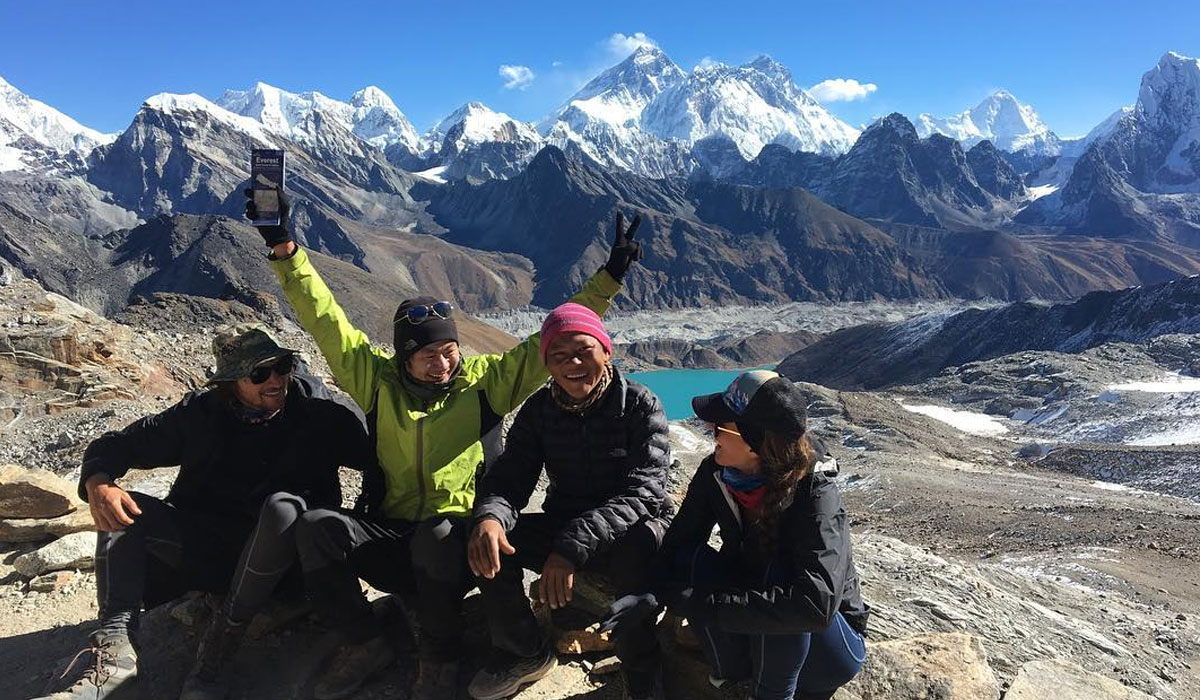Everest Three Pass Trek is undoubtedly one of the most thrilling trekking experiences in the Khumbu region. This incredible trekking adventure explores three of the highest passes in the Himalayas: Kongma La Pass [5,535 meters/ 18,159 feet], Cho La Pass [5,420 meters/ 17,782 feet], and Renjo La Pass [5,340 meters/ 17,520 feet].
Designed especially for trekking enthusiasts who are looking for a bit of more challenging Himalayan adventure distinctive to the regular base camp and circuit treks, this exploration takes you over the three of the most iconic passes of the Himalayas in 5,000-meter class.
Although, these passes are in the 5,000-meter class, all of them are situated over the altitude of 5,300 meters from the sea level. Taking on these Himalayan isn’t any less exciting than an alpine mountain expedition.
So, if you are taking on such high-altitude passes of the Himalayas that are situated in the alpine altitudes, what should you pack for the journey? The Three Passes Trek packing list is slightly more comprehensive than other regular explorations in the Himalayas.
As you will trek across diverse climatic regions from tropical, subtropical, temperate, sub-alpine, and alpine, you will need to pack appropriate layers and gear to enjoy a comfortable trekking experience.
Here, we have created an appropriate Three Passes Trek packing list that covers the packing suggestions from clothing, and footwear to personal hygiene and most essential gear.
Essential Three Passes Trek Packing List

Clothing
Generally, the clothing can be distributed into three layers: base layers, mid-layer, and outer/protective layer. You can take reference from the same layer packing suggestion and decide on the appropriate wear for your adventure.
Base Layer Clothing
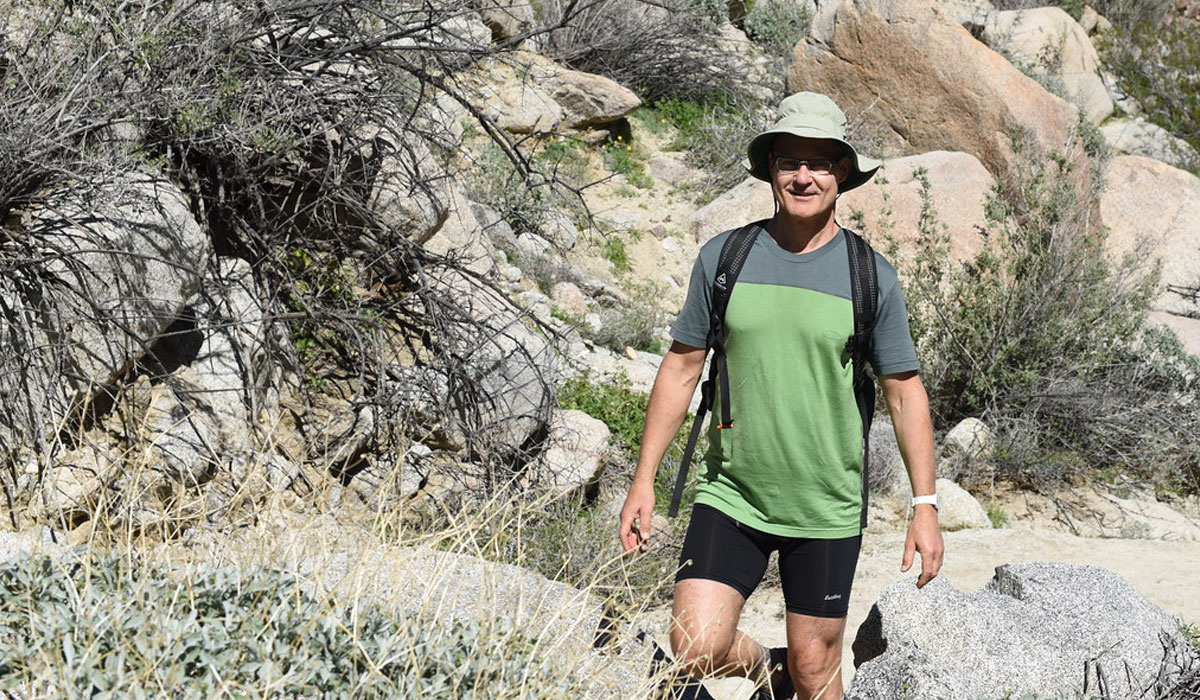
The base layers are the closest clothes to your skin and pretty much of second skin of your body. These layers are very significant components of your packing list as they act as the insulating layer against the cold and moisture-wicking elements in hot temperatures.
So, you should consider packing the right base layers for every type of climatic condition that you have to face during your trek. Packing light moisture-wicking layers for the lower trekking regions and warmer-insulated layers for the alpine altitudes is the most efficient way to manage the Three Passes Trek packing list.
Base Layer Packing Suggestions
- Short sleeve t-shirt
- Long sleeve t-shirt
- Sleeveless t-shirt
- Moisture wicking layers
- Lightweight base layer top
- Thermal vest
- Different layers of undergarments
- Lightweight socks
- Thermal socks, woolen socks
- Leggings
- Beanie
- Cowls, scarf
Mid-Layer Clothing
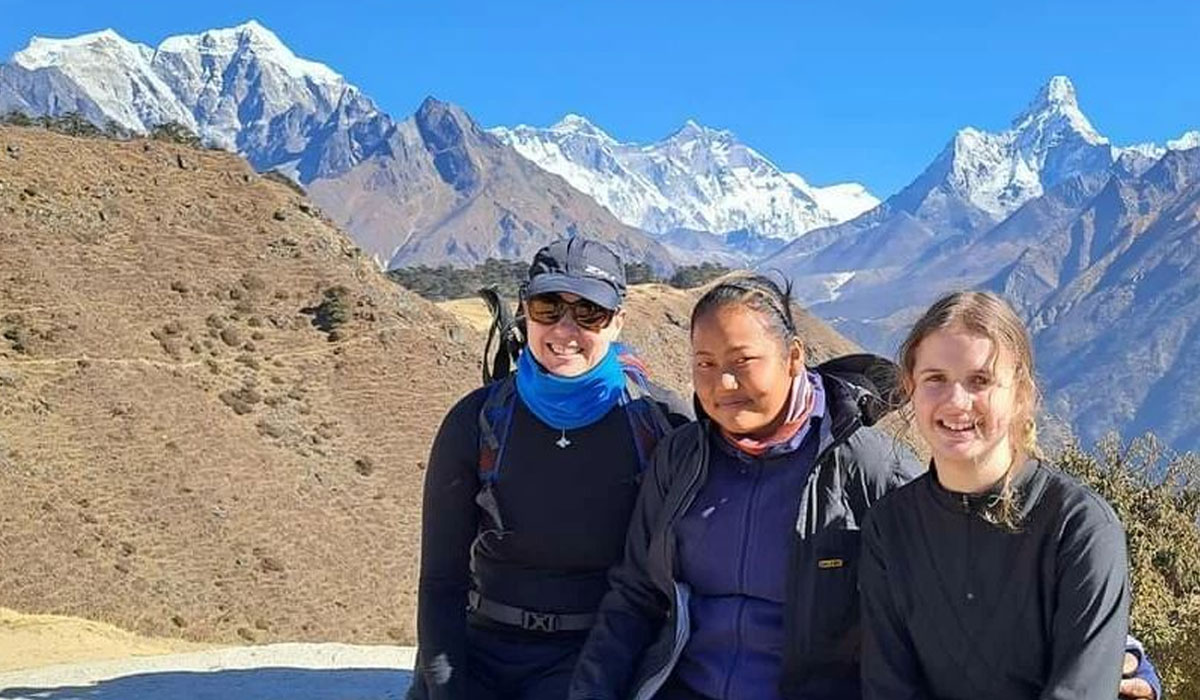
Mid-layer clothes are the second layers that you wear above the base layer. These layers provide additional insulation between your outer layer and base layer. Mid-layers are very important during outdoor adventures, especially for high-altitude treks.
You will be able to regulate your body temperature with the help of the mid-layers. These layers will easily adapt to the different climatic zones, and you can adjust the appropriate level of warmth when needed and enhance the breathability when the temperatures are warmer.
You can’t simply miss these layers in your Three Passes Trek packing list, as the mid-layer provides optimum balance between the base layers and outer layers. Missing out these layers will mean that you will struggle to find a balance between base layers and heavy outer layers.
Mid-Layer Packing Suggestions
- Fleece jacket
- Insulated vest
- Wool sweater
- Fleece neck warmer
- Insulated flannel shirt
- Insulated leggings or pants
- Battery-powered heating clothes
- Softshell hoodie
- Hybrid softshell jacket
- Hand warmer
- Insulated gaiters
Outer/ Protective Layer
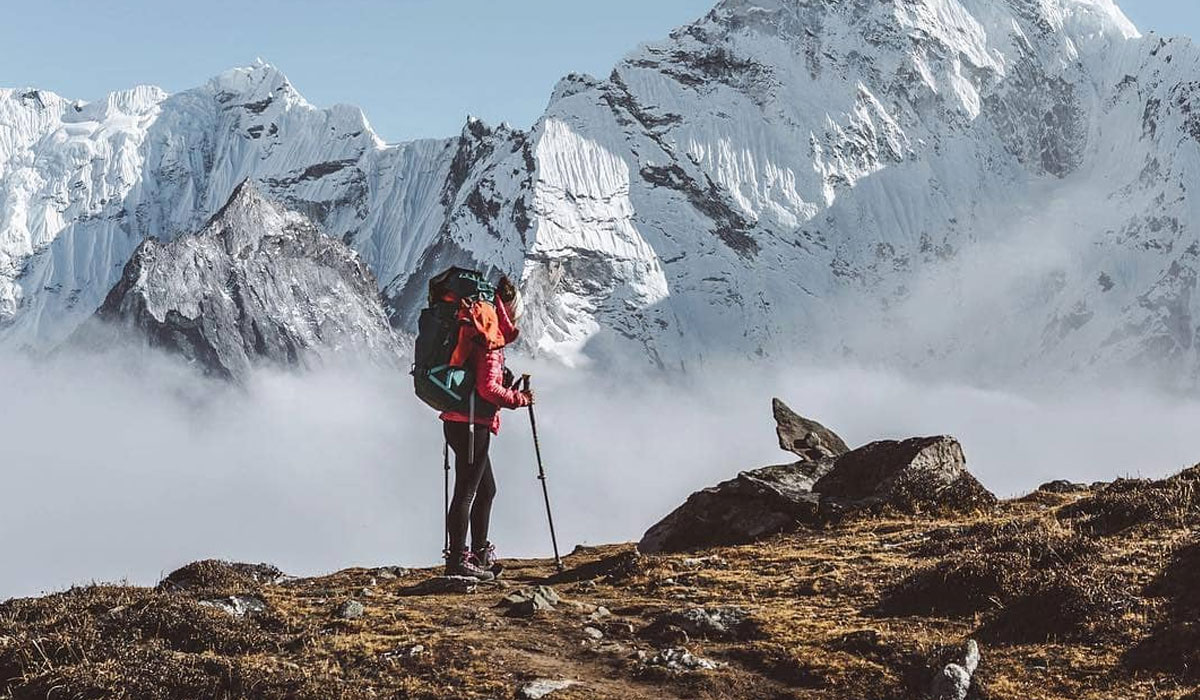
Outer layers are one of the significant layers that shelter your body from external elements. These layers act as protective layers to shelter your body from different unfavorable elements that could affect your body, like snow, rain, wind, and cold temperatures.
This is one of the significant layers in your Three Passes Trek packing list, as you will be traversing across three of the major Himalayan passes in alpine altitudes. So, you will need the appropriate outer layers to protect your body from cold and freezing high-altitude temperatures.
Worn over the mid-layers, these protective layers serve as the first line of defense against any unfavorable climatic conditions that could do harm to your body. If you have a reliable outer layer, then you can immerse in this iconic experience without worrying about the climatic conditions.
Mid-Layer Packing Suggestions
- Waterproof/windproof jacket
- Softshell jacket
- Windbreaker
- Rain poncho
- Waterproof gaiters
- Snow pants
- Waterproof/windproof trousers
- Down jacket (for minus degree)
- Insulated parka
- Waterproof breathable hat
- Shell gloves
Footwear

After discussing the appropriate layers of clothing for the Three Passes Trek packing list, let’s move on to what footwear you should bring during your trek.
Trekking Boots
This is one of the most crucial elements of your packing list for this high-altitude trek. As you will trek across the diverse landscapes on rugged trails and also take on the high Himalayan passes at the alpine altitudes, you should get the most comfortable trekking boots.
While searching for the boots, look for the features like insulation, waterproofing, traction, and breathability. You should look for all-in-one features, as carrying multiple boots makes your luggage heavier. After buying, make sure to break-in first before taking it for the trek.
Sport Shoes or Trainer Shoes
Besides the trekking boos, you should also a pair of sports or trainer shoes. Trekking boots are heavier in nature and are not that convenient when you have to take them off often. So, include a pair of sports shoes in your packing list, and you will be able to walk around more comfortably during your acclimatization days or while doing short hikes around the region.
Make sure your shoes have ankle support; it will be best if the shoes have excellent grip and traction. Then, you will be able to easily maneuver around even the steep and rugged sections along the trekking trails.
Sandals or Crocs
After a long day of tiring journey, you definitely want to get a comfortable rest at the stop points along your trekking route. But, the relaxation won’t be that much of comfort in your sports or trekking boots, so in order to give your feet a breather after a long day walk, you should also include sandals or crocs, whichever you are comfortable with in your Three Passes Trek packing list.
These comfortable footwears will come in handy during the acclimatization points and when you have to cross the streams along your exploration route. By giving your feet a chance to dry and breathe, you will also be able to prevent fungal infections and bad foot odor.
Ankle Support
During the long haul of trekking, ankle support can be a very beneficial element as it enhances stability and prevents any kind of ankle injury. This is a must-have, especially when you are trekking on uneven rugged trails.
This efficient footwear will evenly distribute the weight and pressure so you can enjoy an overall stable trekking experience with confidence.
You may also like:
- Three Passes Trek Difficulty
- Packing List For Everest Base Camp Trek
- The Ultimate Packing List for Trekking in Nepal
Personal Hygiene

This exciting Himalayan exploration will take you on an incredible journey to the remote and isolated part of the Himalayas. Although the Everest region is a mainstream trekking hub, you may often struggle to find the hygiene products that you prefer at the teahouses en route.
So, the best thing you can do to prevent discomfort during the trek is to pack all the hygiene products that you need and, of course, at sufficient volume.
Basic Hygiene Products
In this category, you should pack all the basic hygiene products that you use pretty much in your daily life. For instance, toothbrushes, toothpaste, soap, shampoo, etc. should be in limited quantities so they can last throughout the trek.
Hand Sanitizer and Insect Repellent
When you are on a long journey, your hygiene should be your top priority, especially when you are trekking in remote regions with a limited number of health facilities. If you don’t take care of your basic sanitation, there are risks of you getting sick along the trekking route.
So, you should follow proper sanitization procedures before meals and after using the bathroom. Insect repellents, on the other hand, make your trekking experience more enjoyable as they keep the annoying bugs away if you are trekking in the warmer seasons.
Sunscreen and Lip Balm
Your Three Pass Trek will take you to the high elevation points above 5,000 meters. Thus, you need to take proper care of your skin as you rise to the higher altitudes. The high-altitude regions in this trek have high exposure to the sun, which puts you at risk of sunburn if you don’t take care of your skin.
As you ascend to the alpine altitudes, which are generally cold, you might expect that you may not require sunscreen cream. However, it is the exact opposite; as you ascend higher, the rays of the sun are harsher, despite being the alpine altitudes.
You also need to pack body lotion and lip balm to protect your skin from cold. So, make sure you are totally prepared in the self-care department for this trip.
Toilet Paper
During your trek to the remote high-altitude points of the Himalayas, what you need to understand is that the bathroom facilities are not as developed as in the Western world. Although the teahouses in the lower regions do have modern-style bathrooms, the teahouses in higher regions use traditional bathrooms.
That means the flush system, as well as the toilet paper, are not available in the bathrooms at the higher points. You can buy toilet paper at the teahouses along the route; just make sure to restock enough when you enter the areas with less developed teahouses.
First Aid and Personal Medication
It is important to have basic first aid knowledge when you are taking part in a long adventure. You should familiarize yourself with the basic medications and their functions so you can take care of yourself or anyone in your group in case of injury or sickness.
Even though your guide will carry the first-aid box, it will be wise if you carry a small kit box by yourself as well. Also, if you are using any kind of personal medications, you should bring them in quantities that will last throughout the trek.
It is also a good idea to include medicines in your Three Passes Trek packing list to prevent altitude sickness, as you will take on three of the major passes in the Himalayan region.
Equipment/Gear for Three passes trek
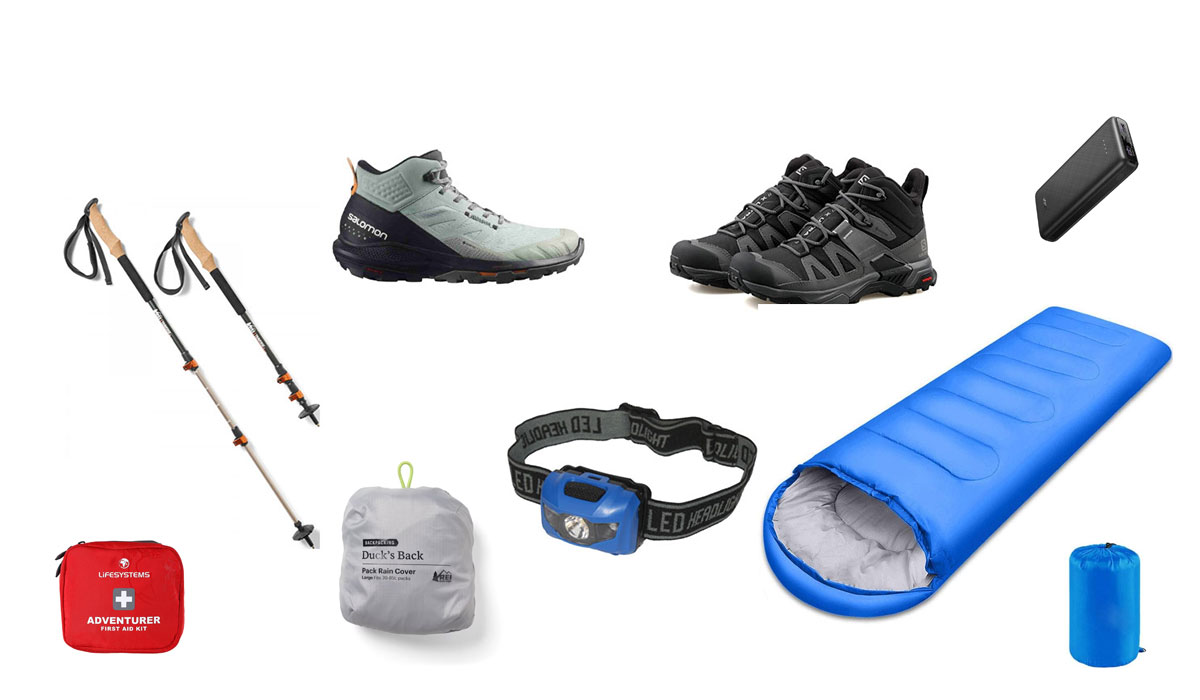
Packing the right gear for your high-altitude adventures will ensure comfort and safety. You should consider packing the appropriate gear and gadgets that enhance this Three Pass Trekking experience.
Trekking Poles
Trekking poles are a must when it comes to long trekking adventures; these stable poles improve your stability and help you find balance as you move across rough and rugged terrains. Using the trekking poles is also known to distribute the workload evenly across your upper body, so you will be able to trek longer distances with less effort.
Their versatility, especially at ascending and descending trails, will enhance the safety of the trekkers and make it easier to maneuver around the obstacles along the route. Another major benefit of using trekking poles during high-altitude treks is that it reduce the impact on the joints, so you can enjoy an immersive experience.
Sleeping Bag
The trekking adventures in Nepal are teahouses-based, it means that the teahouses/lodges along the trekking trail will take care of your food and accommodation facilities. Although, you will stay in warm, cozy rooms and receive pillows, mattresses, and blankets, you are still recommended to pack sleeping bags or sleeping pads.
You are recommended to bring a sleeping bag rated for 0°F (-18°C) or lower in order to ensure warmth and comfort during the cold nights. This gear will insulate you from the cold, and you can get a good rest even at the alpine altitudes.
Power Bank
Your Everest Three Pass trek will take you to the secluded high-altitude regions where the hydroelectricity line doesn’t reach. So, most part of the high altitude regions in this trek are solar-power reliant. That means, you will have to pay extra cost for charging gadgets at the higher points.
It will be best if you bring a power bank and solar charger with you. This way, you won’t have to pay a high cost for charging all your devices, and neither will you have to wait for your turn to charge.
Basic Adventurer Kit
As you embark on a remarkable journey, you should carry the appropriate equipment that will make your exploration exciting and enjoyable. For instance, you shouldn’t miss the cameras, which will help you to capture the iconic sighting and memories.
Similarly, binoculars will enhance the overall adventurer spirit, especially when there is an opportunity for rare sightseeing of the Himalayan wildlife and birdlife. But, what you really shouldn’t miss out on is the navigational adventurer gear like a map, compass, and GPS.
These navigational gears will make it easy for you to pinpoint your location and understand the geography. Also, add the guidebook to the list; you will have enough time to learn more about your destinations during each day of your trip.
Rain Cover and Packing Sack
It is important to protect your luggage while trekking in a region where the climatic conditions can be unpredictable. So, you should get quality protective rain covers to cover your luggage during the trek.
You should also adhere to the packing sack technique for your Three Passes Trek packing list. By organizing the luggage in different sacks, you will be able to optimize the available space and will be able to easily identify the content inside the sacks thanks to different color coding.
But What About Cash?
Although the Three Pass Trek takes place in one of the mainstream trekking regions in Nepal, we recommend you to bring enough cash converted to local currency. There are only a few numbers of ATMs available on this trekking route, and they are not always reliable.
So, to avoid any kind of inconvenience, you should consider carrying enough cash for the trek and converting it to local currencies in the city areas. If you plan to change the currency as you move along the trail, you might not always get a fair exchange rate.
Although your trekking package will take care of all standard fooding and lodging facilities, you will have to pay for the personal natured expenses by yourself. For instance, the cost of snacks, refreshments, laundry, hot shower, charging, etc, are not included in your package.
You might also want to buy authentic souvenirs along your trekking route, so consider that, too, when carrying the money. In an average estimation, you will spend approximately US$ 30 to US$ 50 during each day of your trek.
Can You Buy Trekking Gear in Kathmandu?
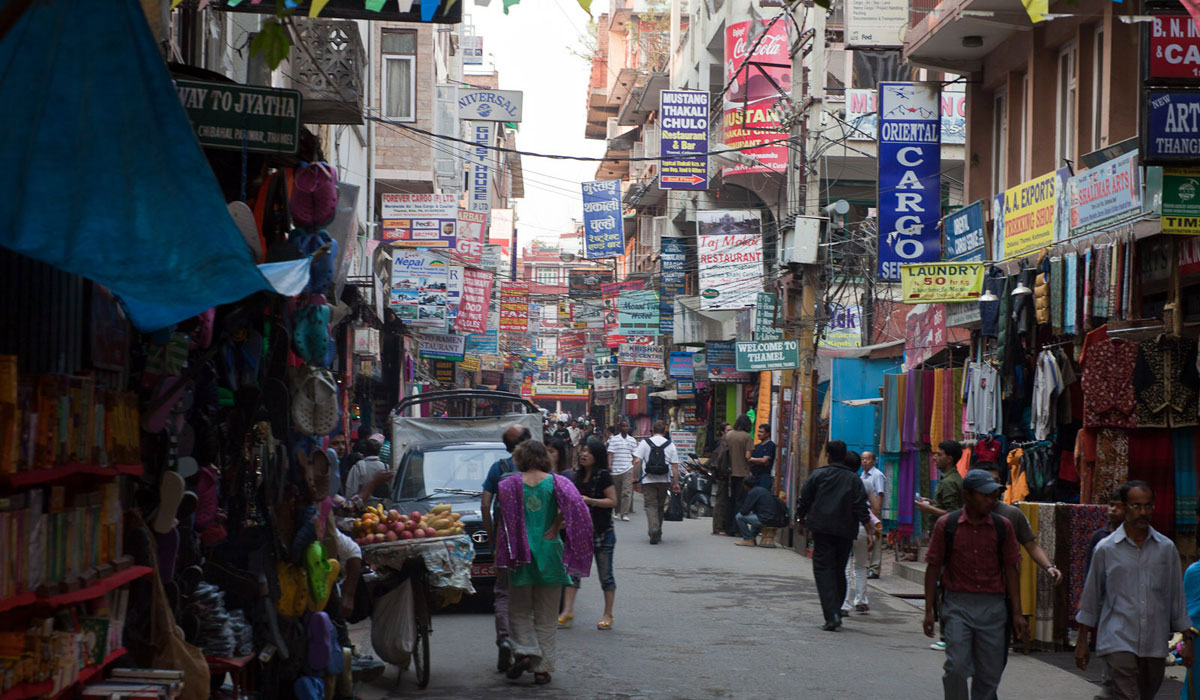
If you want to buy trekking gear in Kathmandu, you will have various options to choose from. In Kathmandu, especially in Thamel, where most of the travel agencies are based on, you will find every kind of trekking gear and clothing.
The best thing about getting the equipment from Kathmandu is that you don’t have to particularly buy it. There are also several rental shops that will provide you with all sorts of gear and trekking clothes necessary for the adventure.
You will have to pay around US$ 2 to US$ 5 per day for renting the gear or trekking clothes at these shops. In case, if you want to buy, make sure that you are buying authentic products and not high copies. You will be able to get the basic level of clothes to trekking layers for about US$ 10 to US$ 80. However, gears can be slightly expensive and cost upto US$ 300 depending on the build and brand.

